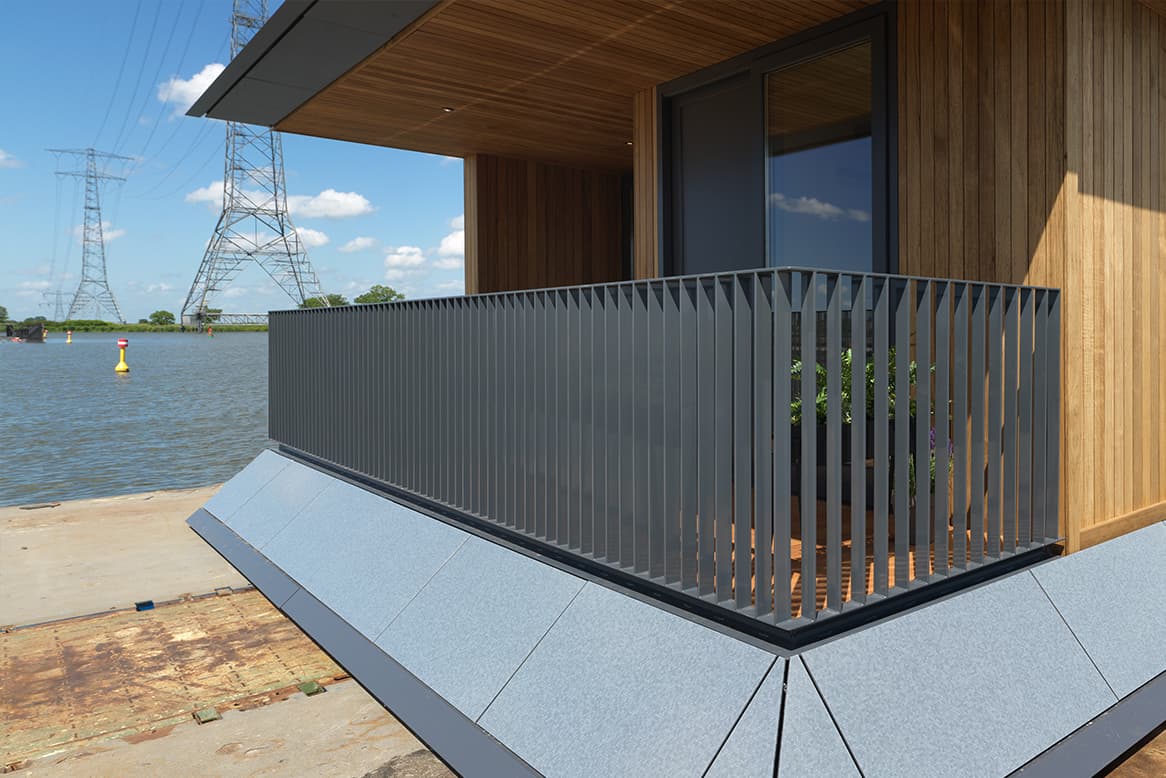BIPVT as a rapid sustainability technology

In order to accelerate the energy efficiency of existing buildings in the Netherlands, solar energy systems play a crucial role in this energy transition. Building-integrated solar panels can actually catalyze this process as both electrical and thermal energy sources. Discover in this blog how Building-Integrated Photovoltaic-Thermal (BIPVT) systems, integrated into a programmatic approach for the renovation market, are set to make a difference.
With 12.1% built-up area, the Netherlands ranks second among Europe's densely built countries, where the average is only 4.2%. Consequently, our country's energy consumption is unnecessarily high due to many of these buildings being outdated and poorly insulated. They fail to meet modern sustainability standards, yet by 2050, over seven million homes and one million other buildings need to be made sustainable. How can we achieve this in a relatively short period?
Solar energy as a solution
In recent years, we've seen an increase in the appearance of solar parks. However, the downside is that they cover 'free' nature or estates, and their establishment can be delayed due to complex regulations.
Moreover, solar parks in the Netherlands generate energy during peak periods, posing a challenge to the capacity of the electricity network, as described in our blog on overload. Additionally, costly cabling investments are required to deliver the energy to end-users.

Sustainable Transformation of Existing Built Environments
In our view, it's more than logical to efficiently utilize existing built areas for energy generation instead of relying solely on solar parks. Ideally, these areas should be in close physical proximity to end-users, consumers, to minimize the distance between energy generation and consumption, reducing the strain on the energy grid.
However, the focus often narrows down to rooftop solar panels, known as PV-on-roof solar systems. While their growth has been substantial, the full potential of rooftops is often underutilized, and aesthetically, these arrays of black panels may not always be visually appealing. A more promising approach to sustainably transform the built environment is through Building Integrated Photovoltaic-Thermal systems (BIPV(T)).
BIPV(T) as a Scalable and Modular Catalyst
A Building Integrated Photovoltaic-Thermal system (BIPV(T)) combines electrical and thermal energy generated from the building envelope, offering an attractive visual appearance. Solar panels can be integrated into building elements and materials, such as BIPV(T) glass, roofing, and facade solutions. They serve additional functions within the building, like sun shading, thermal insulation, or safety features.
Integrating solar panels into buildings ensures that energy generation and storage remain close to the user. Moreover, BIPV(T) is scalable and modular per building. Its modularity eliminates the need for costly collective infrastructure and fits seamlessly into the Dutch built landscape. This makes it a potent accelerator for sustainable transformation.
BIPV(T) delivers BEAUTIFUL energy!
In summary, there is a need for more building-integrated PV systems. Solarix is part of the Dutch 'BIPV(T) delivers BEAUTIFUL energy!' project, aiming for "an innovative, comprehensive renovation approach for a CO2-free built environment through the implementation of a programmatic approach in the renovation market" by the Ministry of Economic Affairs and Climate Policy and the Ministry of the Interior and Kingdom Relations. Starting in 2025, this project aims to transform at least 2500 renovated homes and 2500 new homes annually into Plus-Energy homes using BIPV(T). Updates related to the project can be tracked through initiator Berenschot and BIPV Netherlands or read more in Solar Magazine.
The participating parties are focusing on integrable, affordable, and scalable building-integrated BIPV(T) systems. Through research and innovations, they aim for a cost reduction of up to 40%. Utilizing circular materials, lean production processes, and modular plug-and-play construction principles will ensure a cost-effective building process with reduced manual labor.


With this initiative, we have the opportunity to conduct comprehensive research on scalability, cost-efficiency, material reduction, and product innovation for our own Building Integrated Photovoltaic (BIPV) system, the Solarix design solar facades. We are diligently working on developing standardized BIPV facade panels, a format of which was first seen in the 'De Optopper' project.
Standardized BIPV facade panels with 'optimal' dimensions
Aesthetics are central to our facade panels, but we are also looking into cost-efficiency. Over the past few years, we've executed custom projects and developed Solarix Colours collections with a wide range of designs and colors. However, besides aesthetics, our clients are seeking high yields and easy integration into buildings.
Hence, the idea arose to set a new standard with facade solar panels that align with construction measurements while maximizing energy generation. Within the 'BIPV(T) delivers BEAUTIFUL energy!' project, we are extensively researching how to further enhance our colors for higher energy yield and scalability.

The result? More structure and higher energy yield for architects and project developers. Here's a sneak peek:
Various dimensions that align with most buildings' architecture: 600×1200 mm, 600×1800 mm, 900×900 mm, and 900×1800 mm.
Efficient design with an optimal distribution of solar cells, resulting in a higher energy yield per square meter.
Faster turnaround time from request to delivery.
Standardized dimensions while maintaining the same high-quality colors and designs!
Curious about our developments and the standardized BIPV solar panels for facades?
Sign up for our newsletter here.
• 16 August 2022



